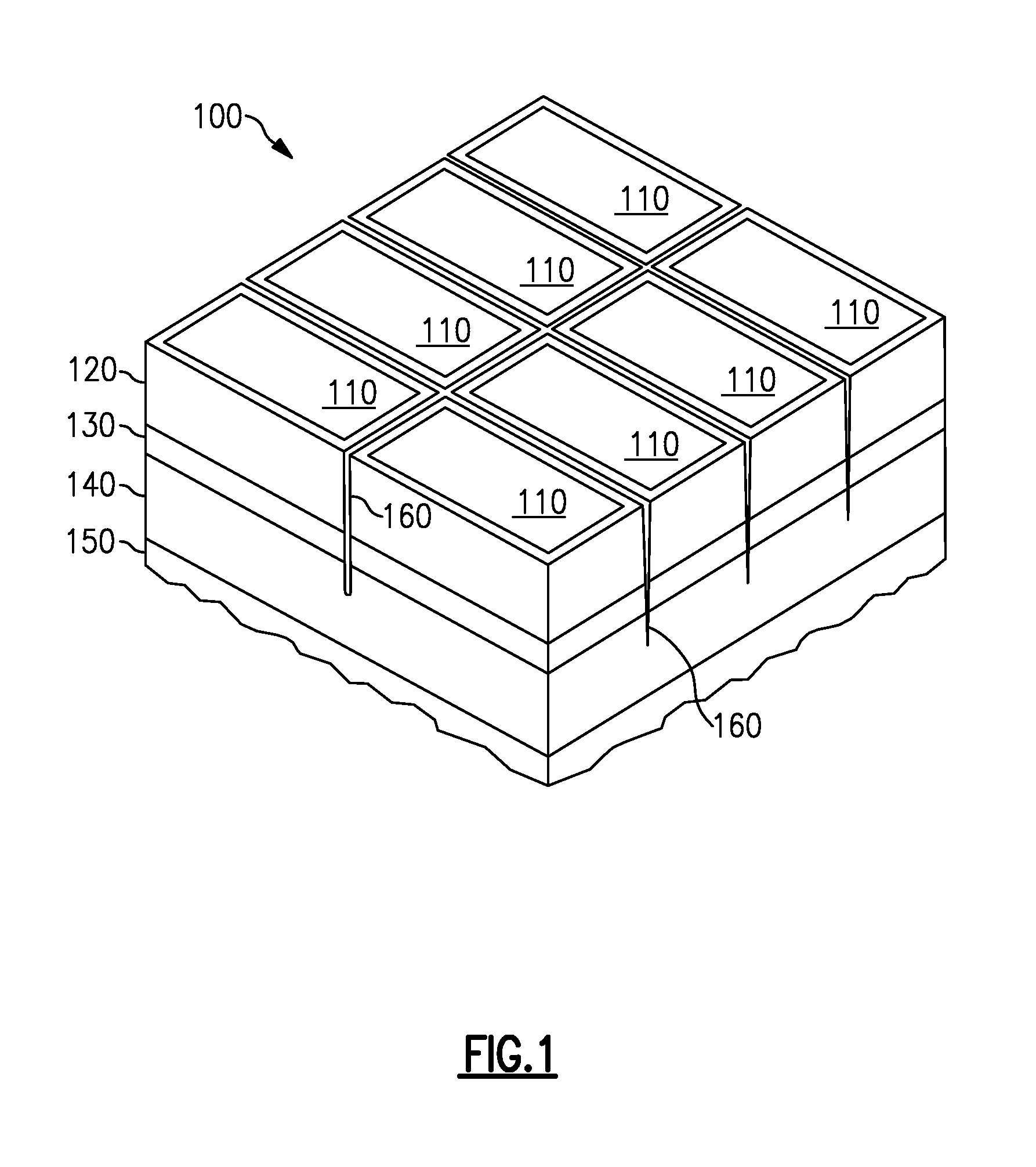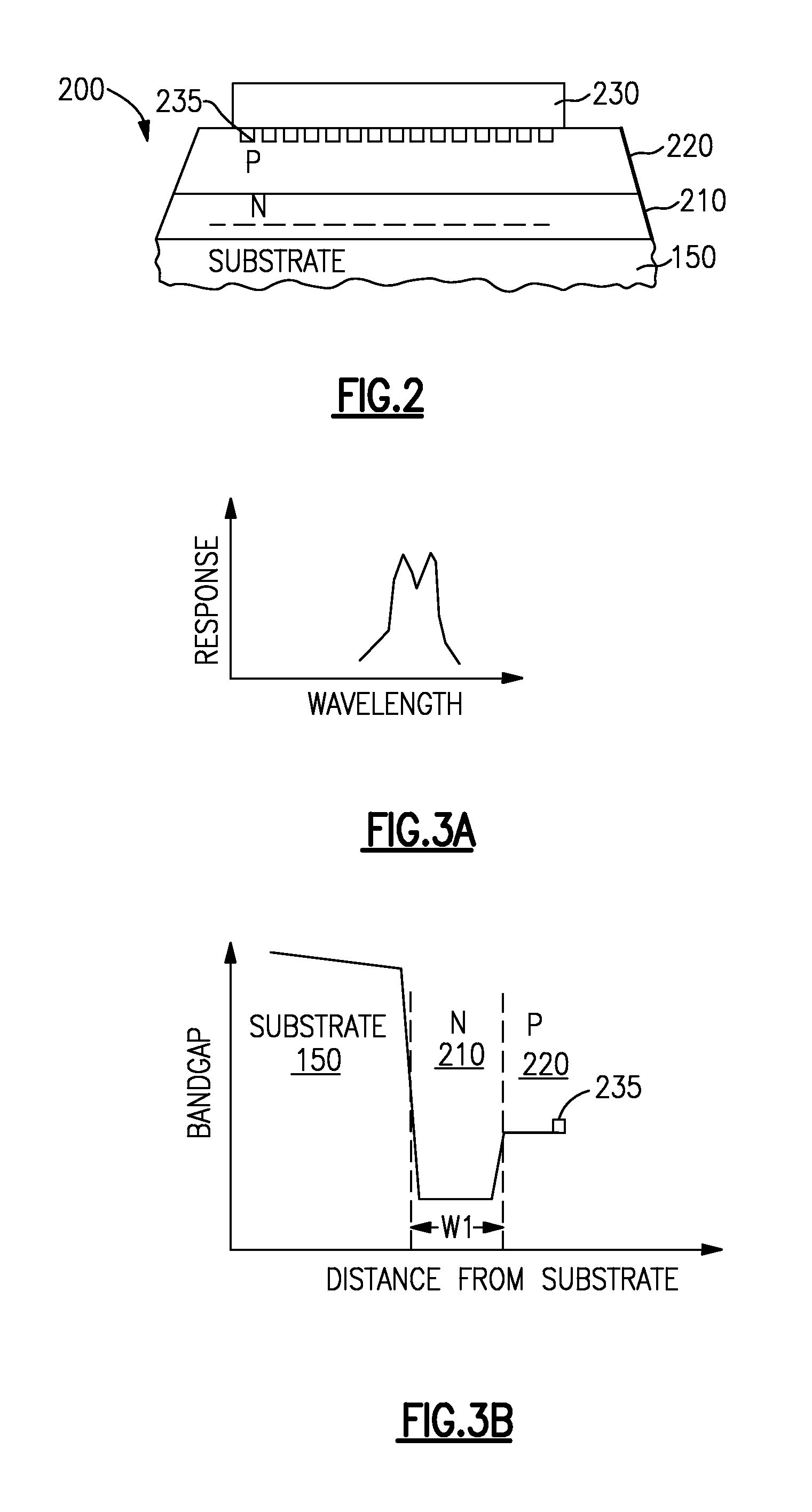Photodetector with surface plasmon resonance
a surface plasmon and photodetector technology, applied in the direction of diodes, radiation control devices, semiconductor devices, etc., can solve the problems of limiting utility and not necessarily achieving a high enough operating temperature to provide significant benefits, and achieve the effect of reducing the thickness of the absorber layer
- Summary
- Abstract
- Description
- Claims
- Application Information
AI Technical Summary
Benefits of technology
Problems solved by technology
Method used
Image
Examples
Embodiment Construction
[0032]Higher operating temp (HOT) focal plane arrays, or other infrared detectors, may be achieved through various mechanisms, some of which include reducing the volume of the detector. As discussed above, infrared detectors are sensitive to thermal noise, which is why these detectors are typically cooled to cryogenic operating temperatures. Noise mitigation may be achieved by volume reduction of the noisier bandgap regions within the infrared detector. However, reducing the detector volume may result in lost performance. Accordingly, aspects and embodiments are directed to a mechanism for compensating for this lost performance. In particular, aspects and embodiments provide an approach for realizing a HOT detector that addresses both the relationship between detector volume and quantum efficiency and the fundamental recombination mechanisms that limit performance at high temperatures. According to one embodiment, a HOT detector leverages surface Plasmon resonance for performance im...
PUM
 Login to View More
Login to View More Abstract
Description
Claims
Application Information
 Login to View More
Login to View More - R&D
- Intellectual Property
- Life Sciences
- Materials
- Tech Scout
- Unparalleled Data Quality
- Higher Quality Content
- 60% Fewer Hallucinations
Browse by: Latest US Patents, China's latest patents, Technical Efficacy Thesaurus, Application Domain, Technology Topic, Popular Technical Reports.
© 2025 PatSnap. All rights reserved.Legal|Privacy policy|Modern Slavery Act Transparency Statement|Sitemap|About US| Contact US: help@patsnap.com



